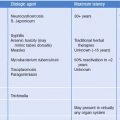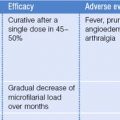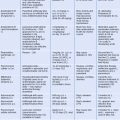CHAPTER 1 An Introduction to the Field of Refugee and Immigrant Healthcare
Caring for immigrants has become a nearly universal experience for healthcare professionals practicing in the first decade of the twenty-first century. The inspiration for this book is our conviction that there is a rich body of international knowledge and experience in refugee and immigrant healthcare. Our overriding goal is to reduce health disparities by defining best practices in refugee and immigrant medicine and making them available to those who are working in the field. The contributors to this text have worked with immigrants and refugees in many of the domains of their lives, and they have joined us in writing about best practice models for care of immigrants and refugees.
Global migration patterns, and the speed of that migration, result in the daily recognition that there are no local diseases. As eloquently described in Thomas Friedman’s book, The Earth is Flat, the business community was perhaps quicker than the medical community to respond competently to the fact that the global is local, and that the key to success in business is to think globally. The same is true in medicine. Every day in hospitals and clinics around the world, healthcare providers struggle with lack of adequate knowledge, skills and abilities, and attitudes to provide high-quality healthcare to new migrants. We cross many cultures in healthcare, including those related to gender, race and ethnicity, socioeconomic status, and belief systems regarding health and illness. Our personal capacity, training, and skills to reach across those cultural chasms are often inadequate to prepare us for the changing demographics of our patient populations. Physicians in training acknowledge this feeling of lack of preparation in cross-cultural healthcare.1 In one study, healthcare providers expressed less satisfaction in clinical encounters with ethnic immigrant patients, with the greatest source of dissatisfaction being associated with patients’ understanding of prevention and management of chronic disease.2 That desire to improve outcomes is an inherent goal for most healthcare providers, and can be particularly challenging with recent immigrants. The provider in the twenty-first century must be cognizant not only of cross-cultural issues, but differences in disease prevalence by race and ethnicity, as well as country of origin. Many immigrants arrive from lessdeveloped countries, and have a higher prevalence of infectious diseases including intestinal parasites, hepatitis B, and tuberculosis. Protocols for screening new arrivals can be complex, and management of diseases heard of only in medical school can be difficult to remember. Once the new migrant has settled, perhaps an even more difficult challenge becomes management of mental health issues (Section 5), preventive healthcare and chronic diseases (Chapter 42), as the healthy migrant advantage (Chapter 3) is lost with time and acculturation.
A complex and far-reaching group of national and international organizations including the Centers for Disease Control and Prevention, the International Organization for Migration, nongovernmental organizations, as well as many resettlement agencies, have had decades of experience in addressing health issues of refugees, the internally displaced, and migrants as they are screened for departure to new countries, as well as upon arrival. Contributing authors outline international screening protocols (Chapter 10), as well as suggested best practices in screening of new arrivals to the United States (Chapter 11). Major diseases seen in refugees and immigrants are discussed in chapters on hepatitis B (Chapters 22,23), intestinal parasites (Chapter 20), and tuberculosis (Chapter 19). Many unusual diseases not seen in North America, as well as diseases with long latency periods (Chapter 17) such as leprosy (Chapter 34) and strongyloidiasis (Chapter 40), are discussed in detail. Key to the diseases and disorders section of this textbook (Section 3) are clinical pearls and common pitfalls in management of diseases seen in immigrants.
Demographic Changes
At least 185 million people worldwide currently live outside their countries of birth, up from 80 million three decades ago.19 The United States is currently experiencing its largest wave of immigration since the beginning of the twentieth century (Fig. 1.1).

Fig. 1.1 Immigration to the United States: fiscal years 1820–2001 (millions).
(From Migration Information Source. http://www.migrationinformation.org)
The percentage of the entire US population represented by the foreign born was much higher in the nineteenth century, and steadily decreased until 1970. Since that time, the percentage of the foreign born in the United States has increased and, as of 2005, accounts for approximately 12% of the total population (Fig. 1.2).
International migration patterns have also had a major impact on Canada and Western as well as Eastern Europe, as shown by the percentage of foreign born in each country in 2001 (Table 1.1).
Table 1.1 Percentage of total population which is foreign born, by country, in 2001
| Australia | 23.1% |
| Canada | 18.8% |
| Sweden | 11.5% |
| United States of America | 11.4% |
| Netherlands | 9.3% |
| Norway | 6.8% |
| United Kingdom | 8.3% |
| Russian Federation (1989 data) | 7.8% |
Migration Information Source, http://www.migrationinformation.org
By far, most international migration takes place among countries in the southern hemisphere and goes largely unreported.20 In the United States, the top 10 countries of origin for the foreign born are led by Mexico, at 28% (Fig. 1.3).
The foreign born remain powerful contributors to the US economy, representing 12.1% of the population, and 14.7% of the civilian labor force by 2005 (Fig. 1.4).
This book focuses on refugees and recent immigrants to the West. As mobile populations created by international geopolitics, refugees and the internally displaced have always been a reality, and will continue to challenge healthcare delivery systems worldwide. Between 1946 and 2004, 229 armed conflicts occurred around the world (Fig. 1.5). Unfortunately, the number of peace agreements (Fig. 1.6) is far outnumbered by areas of ongoing strife.

Fig. 1.5 Number of active conflicts by area, 1946–2004.
(Dept of Peace and Conflict Research, Uppsala University: http://www.pcr.uu.se/)

Fig. 1.6 Peace agreements in armed conflicts, 1989–2005.
(Dept of Peace and Conflict Research, Uppsala University: http://www.pcr.uu.se/)
As a subset of immigrants, refugees are a highly traumatized group, with long histories of difficulties in their country of origin, as well as during their escape and residence in refugee camps in countries of first asylum. Physical and mental health issues can remain difficult for decades for refugees and victims of torture, and are addressed in the mental health section of this text. Refugee women and girls are a particularly vulnerable group, and are often victims of rape and sexual torture. Access to adequate contraceptives and safe prenatal care is poor, and complications of pregnancy and delivery remain a leading cause of maternal mortality worldwide. Medical problems of women refugees, and cross-cultural and clinical issues in care of women refugees, are addressed in Chapters 43 and 44.
Thirty-three million people – or nearly one in every 275 people on earth – are refugees, returned refugees, and internally displaced peoples (IDPs).21 There are currently 12.0 million refugees and asylum seekers worldwide.13 Afghanistan, with an estimated 2 191 100 refugees and asylum seekers, and Palestine, with 2 971 600, are by far the largest sources of refugees.13 While the number of refugees has decreased from a high of 14.9 million in 2001, the number of internally displaced persons has continued to increase. By conservative estimate, more than 21 million people are currently displaced within the borders of their own country.13 In a UNHCR survey of 149 countries, a record 668 000 persons submitted applications for asylum in 2005 (Table 1.2; Box 1.1).14
Table 1.2 Refugees and asylum seekers worldwide (as of 31 December, 2005)17
| Area | Refugees and asylum seekers |
|---|---|
| Middle East | 48 55 400 |
| Africa | 3 176 100 |
| South and Central Asia | 1 953 000 |
| East Asia and the Pacific | 1 029 400 |
| Europe | 530 200 |
| Americas and the Caribbean | 475 000 |
| TOTAL | 12 019 100 |











